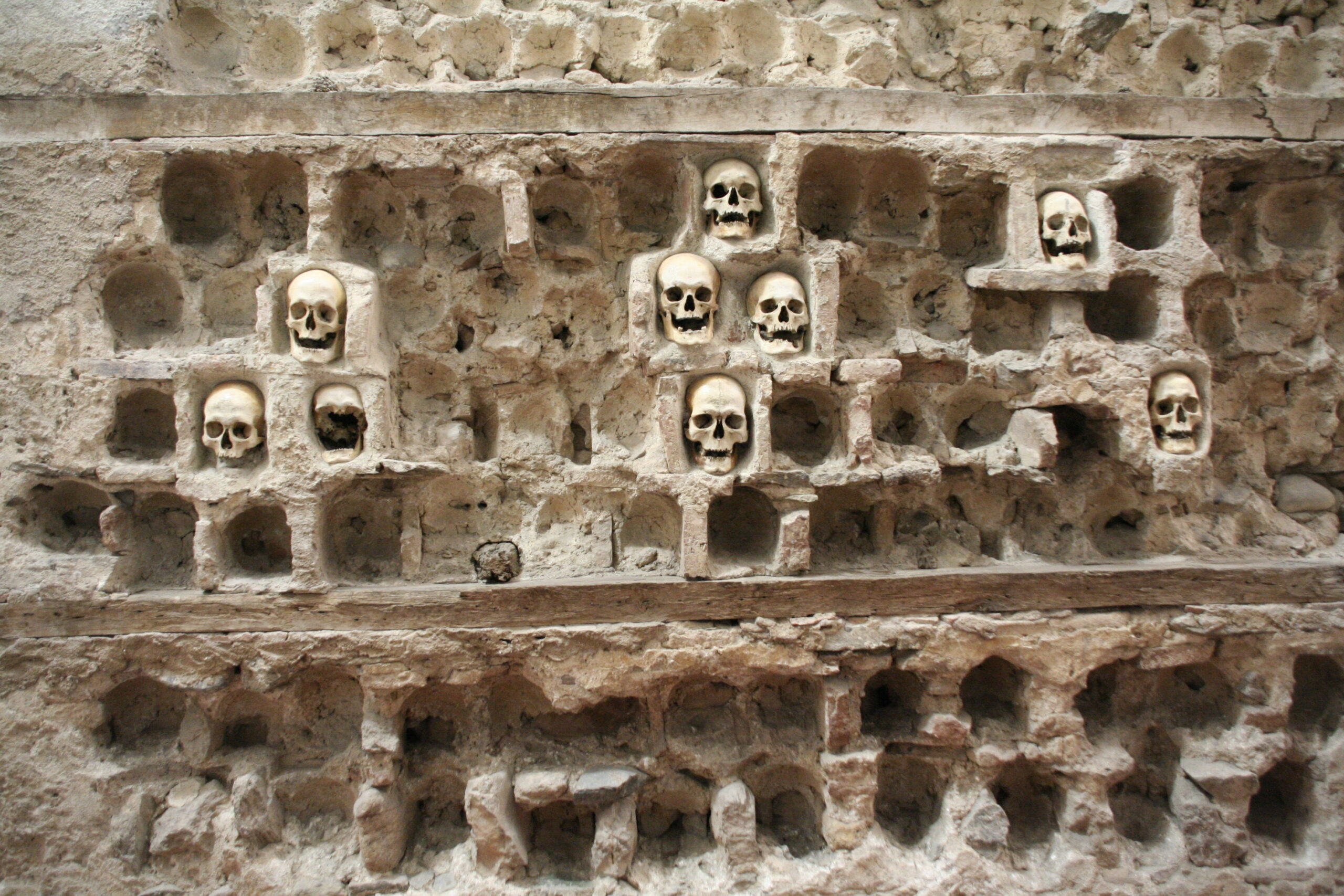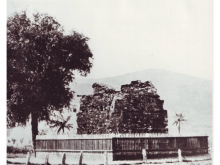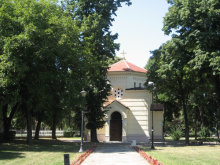After the Battle of Čegar the Turks wanted to take revenge on the Serbian people in the most ferocious way. On the outskirts of Niš, on the road leading to Constantinople, they decided to build a tower from the skulls of the fallen Serbian soldiers. Hurshid Pasha, the Turkish commander of Niš from 1809 to 1812, ordered Serbian furrier to skin the heads of the fallen rebels and stuff their skins with cotton. He paid them 25 coins each. The skins filled with cotton were sent to the sultan in Constantinople as a sign of victory. Skull Tower was built from human skulls. The main tower is quadrangular in shape, about 4 meters high. The skulls were facing outwards and were fortified with lime and sand. There were 952 skulls in 14 rows on each side.
The sight of the tower with so many skulls had a terrible effect on all those who saw it. It left a painful and difficult impression, especially on Serbs living in the city and its surroundings. For humane and religious reasons Christians from Niš was removing the skulls from the tower at night and burring them in the cemetery. Having learned about this the Turks managed to stop it. Over time, however, the opinion about Skull Tower changed among more sensible Turks.
Mithad Pasha, who was educated in Paris, intended to tear down this barbaric monument during his administration in Niš (1861 – 1866) but he encountered resistance from the Turks living in Niš. That is why the tower was preserved, and thus, a great service was done to our people. Until the liberation of Niš from the Turks in 1878 the tower was uncovered. It was fenced and roofed that year. Fourteen years later, with the donations from entire population in Serbia, a chapel was built that still exists today. After the liberation of Niš, the number of skulls in tower was significantly reduced.
The decrease in the number of skulls in Skull Tower was influenced, among other things, by time itself, so today 58 skulls have been preserved from oblivion. The protection and setup of Skull Tower, undertaken in the first years after the liberation of the city, continued later. During the celebration of the 60th anniversary of the liberation of Niš from the Turks (1937) the iron fence was built around the tower. A year after that the monument with the bust of Stevan Sinđelić and the relief depicting Čegar Battle was erected in front of the Skull Tower. The monument is the work of sculptor Slavko Miletić. On the occasion of celebrating 180th anniversary of the Battle of Čegar on May 31, 1989 the area around the Skull Tower was developed and landscaped and the chapel itself was renovated.
By erecting Skull Tower in Niš, in the city that connects Central with South-Eastern Europe and the Middle East, the Turks wanted the monument to be a warning to the Balkan peoples – that they would suffer a horrible death if they tried to rise up against Turkish rule. The monument, however, did not play that role. On the contrary, it was the impetus for definitive liberation.
In 1833 the French poet and academician Alphonse de Lamartine (1790-1869) published his work “Journey to the East” in Paris, and in the special chapter “Notes on Serbia”, being deeply moved by what he saw in the Skull Tower, among other things, he noted the following: “I greeted with my eyes and heart the remains of these brave people, whose severed heads became the cornerstone of the independence of their homeland.”




